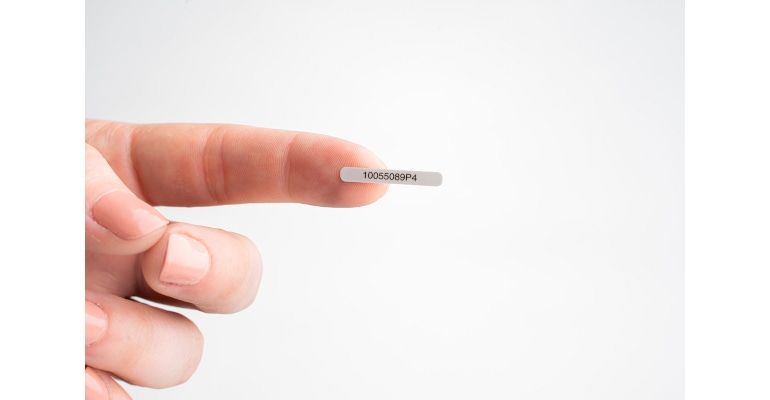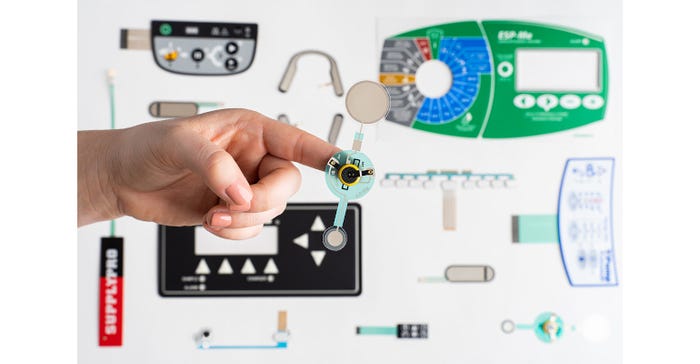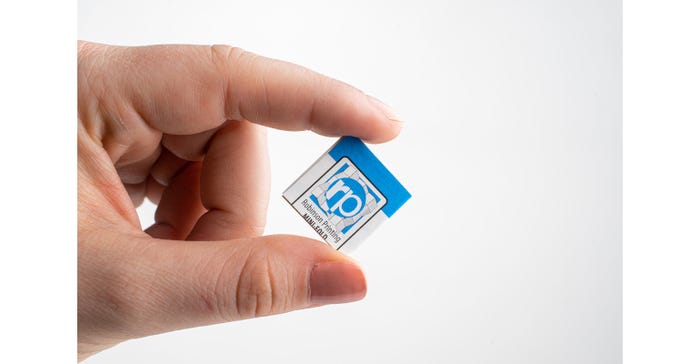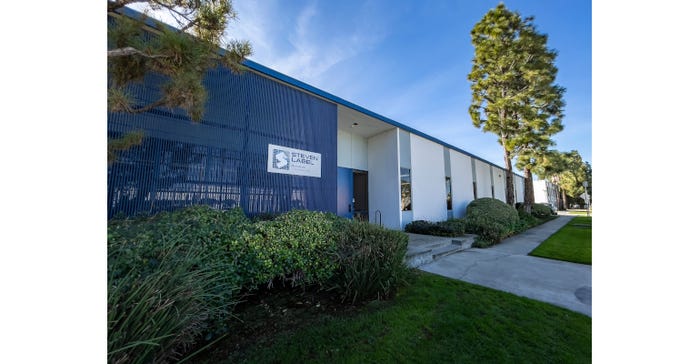Steven Label & Robinson Printing earn ISO 13485 certification to speak the same quality language as medtech companies.
May 25, 2021

In January, Steven Label & Robinson Printing achieved ISO 13485:2016 certification for manufacturing labeling, folding cartons, IFUs, membrane switches, overlays, and related products for the medical industry. The company has grown by 14% in 2020, reports Lori Robinson, marketing manager. It just added another building in the Temecula area, gaining 43,000 sq ft, and is expanding operations to offer bundling and kitting services along with labels, IFUs, and folding cartons. Steven Label & Robinson Printing now have 6 facilities in Santa Fe Springs, CA; Temecula, CA; and Tijuana, Mexico.
MD+DI asked Lori Robinson a few questions about the new certification, weathering the pandemic, and the future of medical device labeling.
Congratulations on becoming officially certified to the ISO 13485 standard. Can you explain how your certification will benefit medical device companies?
Robinson: One of our largest customer sectors is the Medical Device industry. Medical devices often come into close contact with patients and range from providing minor support for various medical conditions, to supporting lifesaving capabilities. Because of this, it is imperative that the device itself—and its supporting labeling, instructions, and packaging—meet a higher standard of criteria for quality processes and traceability and provide the documentation proving accuracy. We have achieved ISO 13485, a higher quality standard (than our previous ISO 9001) in support of our customers and to aid them in the administration of their own Quality Management System (QMS). We understand it is always easier to implement a QMS with the support of similarly certified vendors, like Steven Label & Robinson Printing.
Steven Label & Robinson Printing previously had ISO 9001 certification. What steps were needed to achieve ISO 13485 certification?
Robinson: Over the course of 2020 our Quality Manager, Joe Higgins and his team of internal quality auditors methodically implemented all the steps for becoming certified to ISO 13485. Of course, this began with a gap audit and ended with a seven-day Certification Audit, from our certifying body, confirming our compliance to ISO 13485.
You point out that less than 1% of all print manufacturers in the USA have achieved ISO 13485, according to data provided by Printing Industries of America and Perry Johnson Registrars. Why do you think this has been the case?
Robinson: First, we’d like to explain how we came up with the 1% figure. This was difficult to determine because there is not one particular body that keeps track of this sort of information. So, we reached out to both the Printing Industries of America (PIA) and to our registrar Perry Johnson (PJR). PIA could not tell us of any members that are certified to ISO 13485. Tom Larner, our territory sales representative with PJR, indicated “ . . . there are 53 ISO 13485 registered companies under SIC code 275 and 2 under SIC code 3999.” SIC codes 275 and 3999 are our company’s SIC codes. By performing a search on Google, we found what appears to be about 35,000 printing companies in the USA. If 55 are certified to ISO 13485 (according to PJR), that would be about 0.16% of all printers—so we used the less than 1% figure to be sure to encompass any printers that were not included in those 2 figures. Now to answer your other question, it is unusual for a printer to focus their attention on the Medical Device industry—not unprecedented, of course—but the majority of the 35,000 U.S. printers do not have this focus for their customer base. Because of this, this probably explains the very low number of printers that have achieved this certification. In fact, most medical device companies find the ISO 9001 certification to be sufficient for their purposes of qualifying vendors. But we really wanted to “shout” our support for our customers in this specific industry, and the feedback from many of our customers have indicated they are very pleased we have achieved this and realize the level of commitment required to comply to this certification. We’d also like to add that all the requirements of ISO 9001 are included in this certification, which means we are still compliant with customers requiring that, as well.

Will ISO 13485 certification enable Steven Label & Robinson Printing to help medical device manufacturers manage any trends or new challenges they are facing?
Robinson: Since medical device manufacturers are required to have the ISO 13485 certification, it directly benefits them to have vendors with this certification as well—simply streamlining their Quality Management System since ours is structured in the same way, and we’re speaking the same “quality language.”
2020 brought new challenges, too. Were there any challenges in particular the printed materials industry saw during the pandemic and emergency response, and if so, how did you overcome them?
Robinson: Yes! Our challenges were also a blessing in the form of more work. Many of our customers were directly involved in the fight against COVID-19—whether they manufacture ventilators, hospital beds, catheters, testing swabs, or test kits, it was imperative that we meet their increased demands and tight turnarounds. In the midst of all the craziness of 2020, we have also been assisting our customers as they prepare for the MDR/IVDR regulations. In particular, our version of a Patient Implant Card specifically addresses one of the MDR/IVDR requirements and has helped some of our customers quickly meet this need. In addition, many of our customers have had the need to expand their product labels and instructions for use (IFUs) to include additional regulatory verbiage. We have been able to help them with this, in most cases, without having to expand the footprint of the label or instruction that goes with their packaging.

Steven Label & Robinson Printing added 43,000 square feet of manufacturing space in Temecula, CA, adding new machinery and new employees. Can you explain some of the latest machinery and technology you are using and how it will help medical device manufacturers?
Robinson: In order to meet our customers’ specifications for full-color, multi-fold instructions and booklets, we have added additional equipment, personnel, and square footage to our arsenal. This addition will significantly increase our Robinson Printing division’s capacity by 70% or more and enable our team to meet our customers’ growing volume demands. We have also expanded our capabilities with contract packaging, offering kitting services for multiple instructions, manuals, and quick start guides—streamlining our customers production lines.
What does the future of supporting instructions, labeling, and packaging for medical devices hold, and how Steven Label & Robinson Printing are positioned to help?
Robinson: As regulatory requirements expand (like MDR/IVDR), we have found our customers challenged to get ever-increasing content into their instructions and labeling—without expanding the space they need inside their product’s packaging. Because we have been in business for more than 97 years, we have exceptional experience with problem-solving these kinds of issues for our customers. In addition, we remain on the cutting edge of technological and regulatory developments that affect our customers, and we are always striving to enhance the products and services we offer to efficiently and economically assist them in getting their life-saving products to market.

About the Author(s)
You May Also Like


